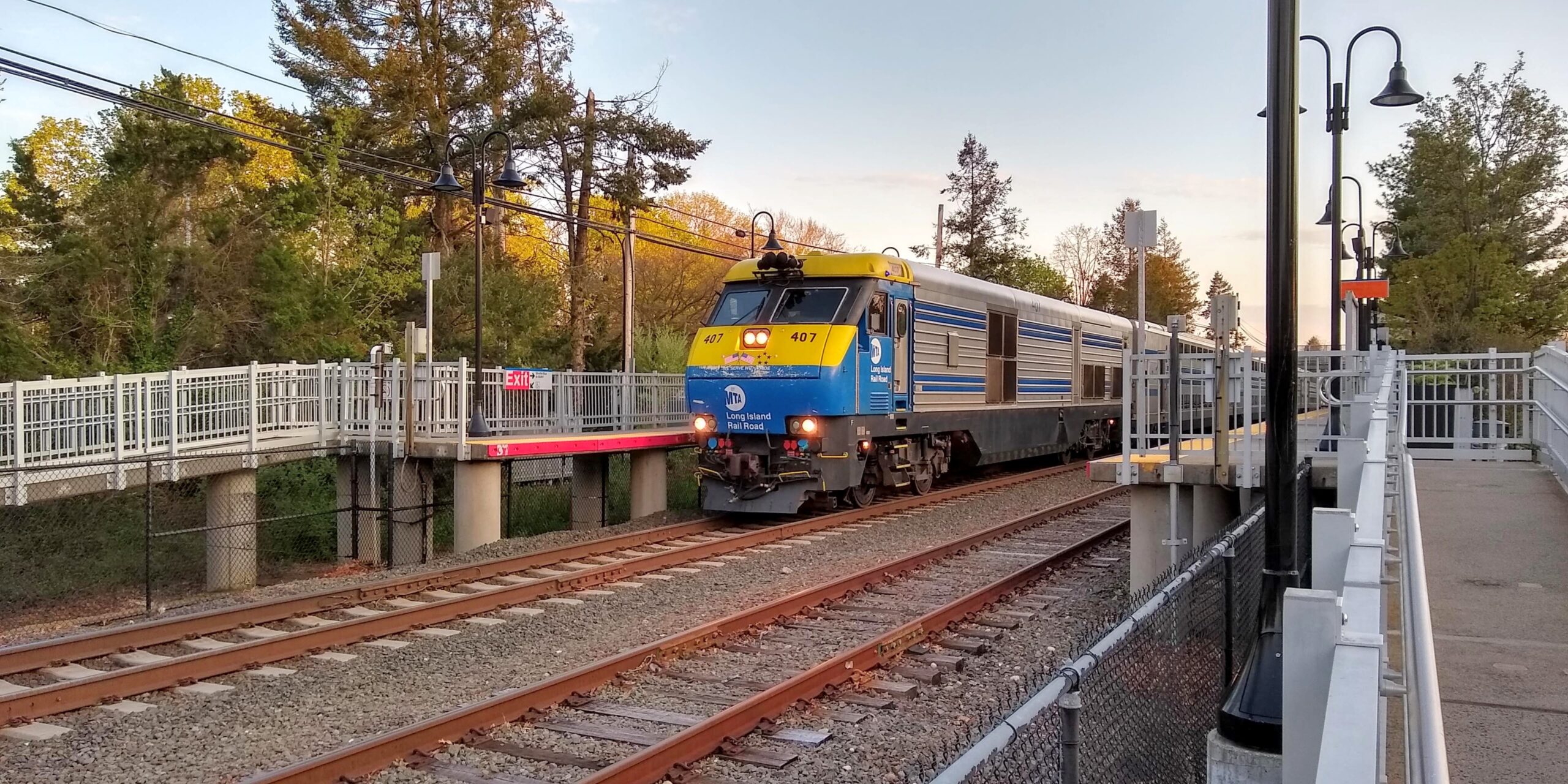By Larry Penner
Electrification of the Long Island Rail Road Port Jefferson branch has been periodically advocated since the 1950’s by generations of elected officials with no success. In 1970, electrification was extended from Mineola to Huntington, providing some relief. In the 1980’s, discussions took place between the Metropolitan Transportation Authority, LIRR, Suffolk County and various elected officials over which branch should be electrified first. The Ronkonkoma branch was selected over the Port Jefferson branch. It took thirty-five years before the completion of full double track electrification. Funding for this effort was provided by grants from the Federal Transit Administration.
The estimated cost to extend electrification beyond Huntington today according to the MTA’s 2024 – 2044 Twenty Year Capital Needs Assessment Plan is $3.1 billion. Between inflation and changes in scope, it will easily grow to $3.6 billion over time. This is necessary to pay for planning, design and engineering, environmental review, private property easements, land acquisition for construction of power substations, expansion of commuter parking, relocation and/or consolidation of existing stations, new stations and platforms, new electric multiple unit car storage yard, double tracking, third rail, signals, and construction management. From start to finish, this could require fifteen years or more.
The next opportunity for MTA to commit funding to advance the Port Jefferson electrification project will be within five months when the 2025-2029 $51 billion-or-more Five-Year Capital Plan is officially released by the MTA in October 2024. This will be followed by formal adoption of this latest Capital Plan on or before January 1, 2025.
Suffolk County Executive Edward Romaine’s (R-Center Moriches) MTA Board member Marc Herbst must convince MTA Chairman Janno Lieber and LIRR President Richard Frey to include funding. The New York State Department of Transportation provides significant financial assistance to the MTA. Suffolk County should request NYSDOT also contribute. The new State Senate Transportation Committee Chairperson Jeremy A. Cooney has expressed interest in supporting transportation projects in upstate, NYC, and Long Island. Project advocates should meet with both him and State Assembly Transportation Committee Chairperson William Magnareilli to obtain their support.
Members of both the State Assembly and Senate have access to their share of several hundred million in annual funding allocated for member item local projects. Every elected official whose constituents are within the Port Jefferson LIRR branch service area who claim to support this project can contribute their fair share of financial assistance. Senators Chuck Schumer (D) and Kirsten Gillibrand (D) always boast how they bring home billions in transit dollars to New York State to pay for various transportation projects. They both need to come on board and assist in delivering funding from Washington.
Funding to advance this project needs to be programmed in increments, first, for planning, preliminary design, engineering, and the National Environmental Policy Act (NEPA) review. Several hundred million to pay for these costs need to be programmed in the upcoming 2025 – 2029 $51 billion or more Five Year Capital Program. Following the federal National Environmental Policy Act (NEPA) is necessary to preserve future Federal Transit Administration funding eligibility. Governor Kathy Hochul (D) must be convinced to instruct MTA Chairman Janno Lieber to request permission from FTA to enter this project into the agency’s Capital Investment Grant (CIG) New Starts/Core Capacity national discretionary competitive grant program.
Then comes final design and engineering, property easements, land acquisition and utility relocation. This would be followed by $1.6 billion in local MTA funding included in the MTA 2030 – 2034 $51 billion or more Five Year Capital Plan to leverage a similar amount in federal funding under a future FTA CIG Full Funding Grant Agreement (FFGA). It averages five years for a multi-billion dollar project like LIRR Port Jefferson electrification from entry to award of funding under this FTA program. As each new MTA Five Year Capital program comes and goes without dedicated funding, it will delay any hope of seeing Port Jefferson branch electrification.
Continued editorial support by The Messenger and others such as Newsday is also essential to keep this project on the radar screen by both elected officials at all levels of government along with funding agencies at the state and federal level if it is to become a reality in our lifetime.
Based upon my past experiences on other Federal Transit Administration MTA LIRR projects, even if all goes well as I’ve outlined, electrification of the Port Jefferson branch may not be completed until 2040.
Larry Penner is a transportation advocate, historian and writer who previously served as a former Director for the Federal Transit Administration Region 2 New York Office of Operations and Program Management. This included the development, review, approval and oversight for billions in capital projects and programs for NJ Transit, New York Metropolitan Transportation Authority, NYC Transit bus, subway and Staten Island Railway, Long Island and Metro North Rail Roads, MTA Bus, NYCDOT Staten Island Ferry, along with thirty other transit agencies in New York and New Jersey.




